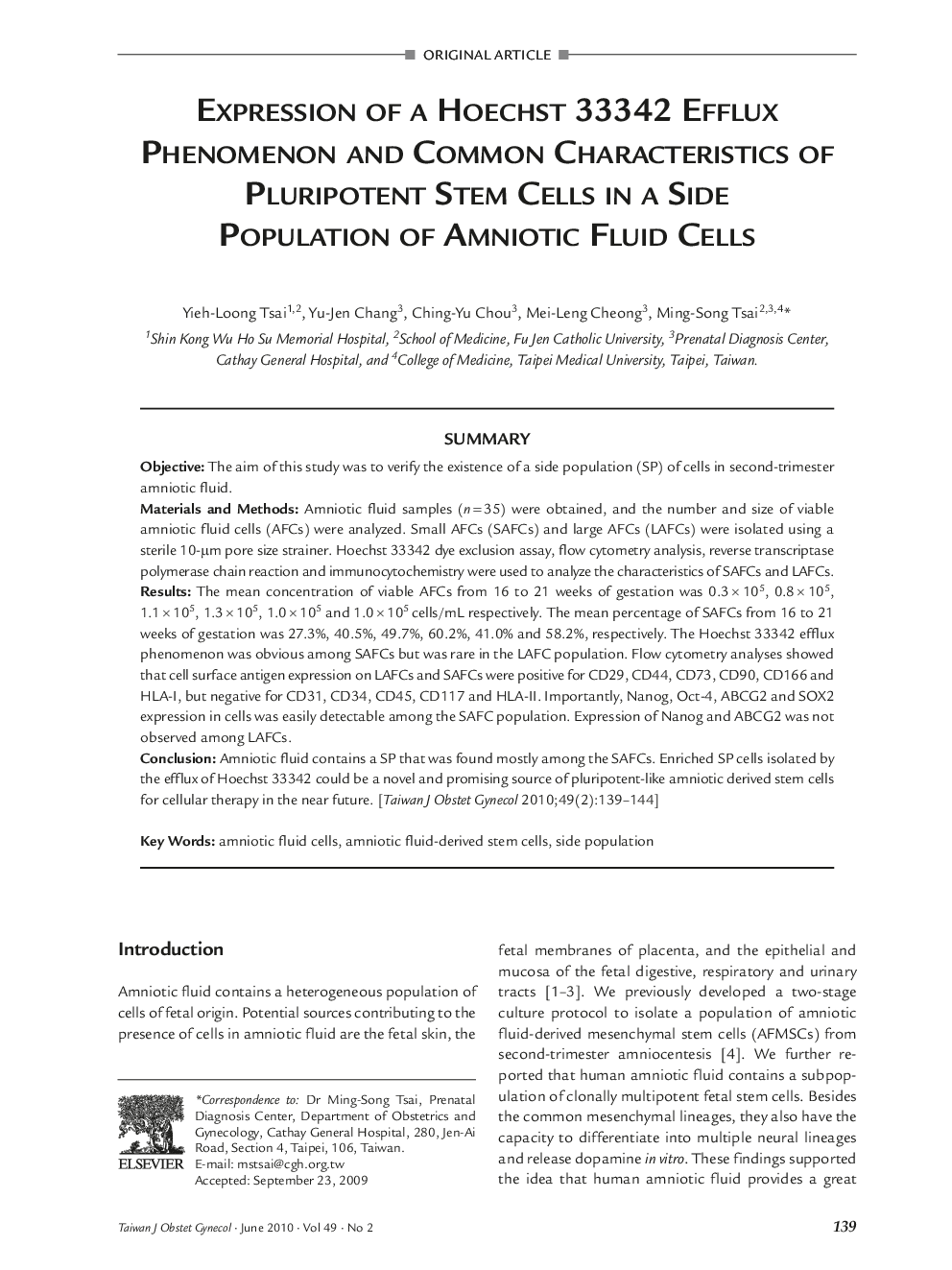| Article ID | Journal | Published Year | Pages | File Type |
|---|---|---|---|---|
| 3975839 | Taiwanese Journal of Obstetrics and Gynecology | 2010 | 6 Pages |
SummaryObjectiveThe aim of this study was to verify the existence of a side population (SP) of cells in second-trimester amniotic fluid.Materials and MethodsAmniotic fluid samples (n = 35) were obtained, and the number and size of viable amniotic fluid cells (AFCs) were analyzed. Small AFCs (SAFCs) and large AFCs (LAFCs) were isolated using a sterile 10-μm pore size strainer. Hoechst 33342 dye exclusion assay, flow cytometry analysis, reverse transcriptase polymerase chain reaction and immunocytochemistry were used to analyze the characteristics of SAFCs and LAFCs.ResultsThe mean concentration of viable AFCs from 16 to 21 weeks of gestation was 0.3 × 105, 0.8 × 105, 1.1 × 105, 1.3 × 105, 1.0 × 105 and 1.0 × 105 cells/mL respectively. The mean percentage of SAFCs from 16 to 21 weeks of gestation was 27.3%, 40.5%, 49.7%, 60.2%, 41.0% and 58.2%, respectively. The Hoechst 33342 efflux phenomenon was obvious among SAFCs but was rare in the LAFC population. Flow cytometry analyses showed that cell surface antigen expression on LAFCs and SAFCs were positive for CD29, CD44, CD73, CD90, CD166 and HLA-I, but negative for CD31, CD34, CD45, CD117 and HLA-II. Importantly, Nanog, Oct-4, ABCG2 and SOX2 expression in cells was easily detectable among the SAFC population. Expression of Nanog and ABCG2 was not observed among LAFCs.ConclusionAmniotic fluid contains a SP that was found mostly among the SAFCs. Enriched SP cells isolated by the efflux of Hoechst 33342 could be a novel and promising source of pluripotent-like amniotic derived stem cells for cellular therapy in the near future.
